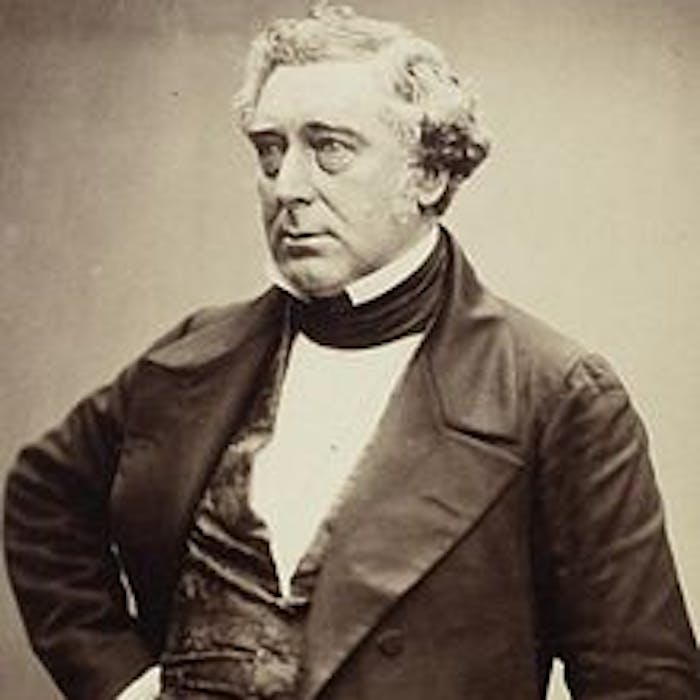
Robert Stephenson - the man behind the worldwide railway boom
Robert Stephenson was an English civil engineer and designer of locomotives. The only son of George Stephenson, the "Father of Railways", he built on his father's achievement, with both the technical design of steam engines and the spread of railways around Britain and the world, and has been called the greatest engineer of the 19th century.
Robert was born in 1803 in Willington Quay near Wallsend, Northumberland. After leaving the Bruce Academy in Newcastle in 1819, he was taken on as an apprentice mining engineer at Killingworth Colliery, subsequently working for three years as a mining engineer in Colombia. With his increasing understanding of engineering, he helped his father in surveying the Stockton & Darlington Railway line, experience which led him to assist in the first surveys of the Liverpool & Manchester Railway.
There was a major debate over the best mode of traction for the new idea of railways. Robert Stephenson & Co, Newcastle was established by George Stephenson in 1823, with Robert the firm’s managing partner. The firm completed its first steam engine Locomotion just in time for the ceremonial opening of the Stockton & Darlington Railway in September 1825. Foreseeing the potential demand for steam engines, it was the first locomotive works in the world.
The company then entered their locomotive Rocket into the Rainhill Trails in October 1829 and it won, convincing a watching world that moving locomotives were the future for the new railway. Robert Stephenson continued to improve on Rocket’s design, its multi-tubular boiler providing the template for steam locomotives built worldwide during the 19th and 20th centuries.
Following the success with the Rocket, Robert was appointed chief engineer of the London and Birmingham Railway in 1833. During the years of ‘railway mania’ during the 1830s and 1840s, he was appointed engineer to a great number of railways in the midlands, north of England and north Wales.
By 1850 Robert had been involved in the construction of a third of the country's railway system.
He designed the High Level Bridge between Gateshead and Newcastle, carrying both a railway and a roadway and Royal Border Bridge on the East Coast Main Line. With Eaton Hodgkinson and William Fairbairn he developed wrought-iron tubular bridges, such as the Britannia Bridge in Wales, a design he would later use for the Victoria Bridge in Montreal, for many years the longest bridge in the world.
He eventually worked on 160 commissions from 60 companies, building railways in other countries such as Belgium, Norway, Egypt, India and France. It is no coincidence that these railways made use of the Stephenson ‘standard’ gauge and had locomotives designed and built by Robert Stephenson & Co, Newcastle.
In 1847 he was elected Member of Parliament for Whitby, and held the seat until his death in 1859. He was elected a Fellow of the Royal Society (FRS) in 1849, and served as President of the Institution of Mechanical Engineers and Institution of Civil Engineers. Stephenson's death in 1859 was widely mourned, and his funeral cortège was given permission by Queen Victoria to pass through Hyde Park, an honour previously reserved for royalty. He is buried in Westminster Abbey.
Further reading
Links to external websites are not maintained by Bite Sized Britain. They are provided to give users access to additional information. Bite Sized Britain is not responsible for the content of these external websites.
